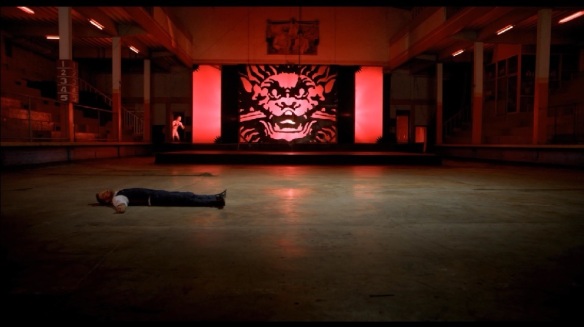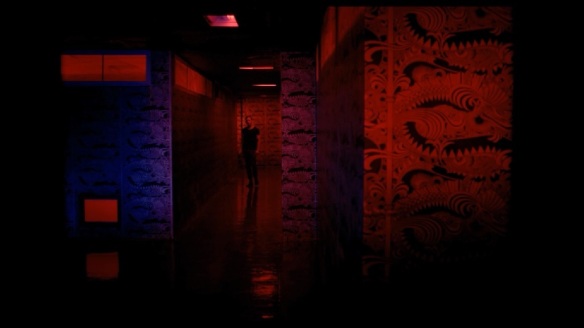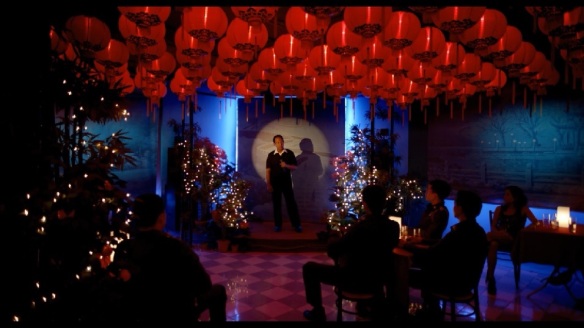
Jack the Ripper (1976) Jess Franco ** – source: one of those no-budget, three movies on one DVD, thingies
In Brief: Jess Franco shocker that’s short on shocks and feels long in the tooth.
For a long time I thought Jess Franco was incapable of making a good film until one day I watched his Venus in Furs and was quite pleasantly bowled over by its freewheeling, meta-textual chicanery. Alas it’s never difficult to be reminded that Franco was more than capable of making terrible films or, in the case of his Jack the Ripper, just decidedly dull, compromised ones. Even with Klaus Kinski in the lead role, this incarnation of the famous tale has little threat and even less dramatic pull to it.
Granted, I did have to endure a horrible looking, unrestored print with a poor English dub but I’m fairly confident they didn’t render a sow’s ear of an actual silk purse. The dub offered its own amusements. I swear, every time a supposed Victorian prostitute opened her mouth I half expected Prof. Henry Higgins to strut triumphantly out of shot. As is typical of Franco’s work, the film is pretty well turned out, its cinematography boasting shadows and mist to keep the light interesting. Unfortunately that’s about all it boasts. Geraldine Chaplin and Franco mainstay Lina Romay are on hand but this is really the Kinski show and his Jack the Ripper, a simpering, Freudian mess, just can’t be very compelling in a film whose story seems propelled by clumsy happenstance outlined in huge chunks of exposition (all badly dubbed, in this instance).
The few scenes of gore would no doubt have elicited disapproving gasps from regular audiences in the 70s, if they managed to stay awake long enough to see them, but ultimately feel tame and poorly designed for anyone familiar with this brand of exploitation cinema. The creepiest thing on offer here is watching Kinski, an accused and likely child molester, playing a man tormented by Freudian demons. I guess that level of ‘ick’ suffuses all his cinema although I tend to think about it more during films like this and Crawlspace than while watching him duke it out with Herzog’s camera in the Amazon basin.
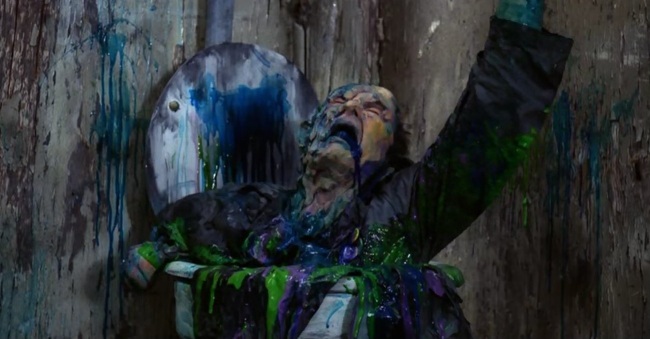
Street Trash (1987) Jim Muro **** – source: Synapse US Blu-Ray
In Brief: A bone-fide 80s cult classic that conjures up connections to Repo Man’s anarchic, punk sensibilities.
It’s difficult to get a handle on Street Trash. While most people would tend to summarise the plot as being about a case of lethal hooch doing the rounds of the homeless community in New York City, liquefying anyone who drinks it, that only captures a fraction of what’s actually on display here. Although the deadly liquor is certainly the film’s most salient element, it’s not really central to the plot. Indeed, there hardly is a plot really, but rather a series of vignettes connected by overlapping characters and locations. Yes, in some strange sense this feels a little like Short Cuts, only with less Raymond Carver and more neon goo deaths.
The scope of the project is admirable, even as the film seems to lurch all over the place. What holds it together is its energy and its production values, the latter of which impress even while we’re left in no doubt that the film was working with few resources. It’s not often where you can cite the Steadicam work as being far more adept than the basic acting, but Street Trash makes that happen. That they have a Steadicam at all speaks to the grandiose sense of scale the film’s architects obviously envisioned even as they scraped funds together around a 16mm short film that centred exclusively on the deadly booze. What also helps is that Street Trash feels a lot like a punk song distilled onto celluloid. For all its scope it knows it’s primarily going to piss people off and its portrayal of the homeless community, working stiffs, cops, Vietnam veterans, and everyone else is resolutely garish and caricatured. That’s fine though, because it’s funny and it also clearly doesn’t care what you might happen to think.
Around the dissolving bodies, we have a love story, a criminal investigation, turf wars, rape and murder, and a comic scene involving a man chasing around after his newly severed penis. There’s just so much going on that they had to cut out a dance number which was also shot. If that sounds terribly messy, and it is, then it’s part of the fabric of the film and a defining aesthetic choice rather than a distracting deficit. Sure we might never be expected to take a film too seriously when one of its opening scenes involves a man dissolving while on the toilet and eventually flushing himself down the tubes but Street Trash gleefully sells you that and a whole lot more. Also, Synapse’s Blu-Ray looks almost impossibly beautiful and bring a whole new level of admiration to the project.
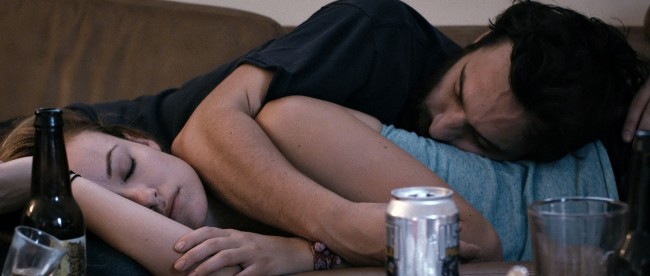
Drinking Buddies (2013) Joe Swanberg **** – source: Netflix
In Brief: A mature little film about romance, friendships, and how they’re complex. Y’know, the exact opposite of 99% of romance films in existence.
I’ll admit up front, I don’t really follow contemporary cinema all that closely. Actually, I don’t really follow any particular cinema closely, I just watch all kinds of random stuff and sometimes that inadvertently leads me to being able to form opinions. But anyway, I’ve heard the names of some of the cast here but really I’ve hardly seen them in anything that I can recall. Director Swanberg helmed arguably the strongest segment in horror anthology V/H/S but that’s not exactly deafening praise (I don’t intend it as an insult either, his work was good) and Anna Kendrick put in a fine turn in End of Watch, which was a shame because she needn’t have bothered considering the end result was so much videogame epilepsy anyway. So having established that I’m way behind on who’s doing what in American cinema, this film pops out as a very pleasant surprise.
The film relies heavily on improvisation and it works well here, allowing the cast to create a warm, familial atmosphere that gives credibility to the delicate nuances of the emotional turmoil examined. At first, I must admit, I was worried that the film seemed to heavily signpost a kind of tired teleology as two couples end up breaking each other up. That’s not quite what unfolds and the film is all the better for it. Swanberg’s film is nothing ground-breaking, but it’s the sort of film that we really can’t have too many of. It understands, as so few commercial works concerning relationships choose to do, that romance is actually pretty tricky work and that committed relationships require quite a lot of thinking, and decision-making, and not being a fragile little flower looking for ‘the one.’
It might not be a soaring work on the human soul, or a searing treatise on the self-destructive impulses of human desire, but that’s actually totally fine. With a small cast, a simple design, and an eye for detail, Drinking Buddies is at once engrossing and universal.
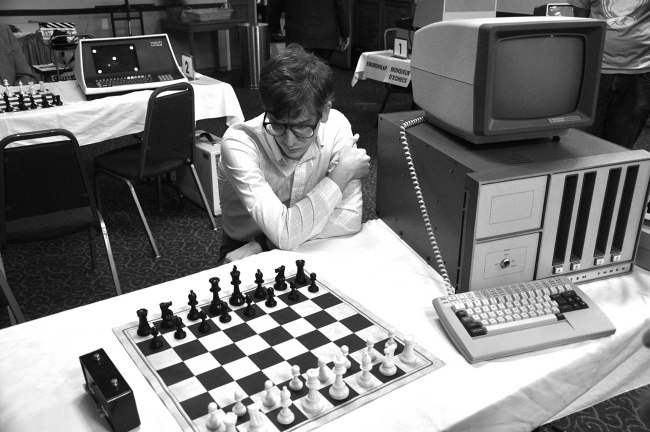
Computer Chess (2013) Andrew Bujalski **** – source: Netflix
In Brief: A highly peculiar amalgamation of scenes about computers and the humans that program them…to play chess…in the 1980s…shot entirely with retro video-cameras.
It would be easy to write off Bujalski’s latest film as a gimmick: a film about computers; set in the 1980s; shot using old video technology. How ‘meta’ right? There’s enough raw ‘pretention’ there to feed a class of film students for a month. And yet Bujalski’s film has a spark and offbeat tone that quickly assuage any fears we might be wandering into someone else’s artistic masturbation session. Of course plenty will still find Computer Chess ultimately frustrating because if it bucks audience expectations it also carves out a trajectory that rejects any sort of classical storytelling.
The entire film is set in a small hotel that is hosting a tournament where various computers will face each other in chess battles. The winning system will then play a human to see how developing artificial intelligences are matching up to the canniness of the human mind. Even that brief story synopsis is ultimately misleading as the film becomes more a series of loosely connected scenes detailing fragmented human interactions and perceptions, allying the all too human programmers to the lines of code they prepare for battle.
The much-vaunted use of retro-technology, the film was shot almost entirely using Sony AVC 3260 tube video-cameras, the model that most likely would have been used were such an event being recorded in the 80s, proves to be no gimmick either, but a central supporting structure for this curious product. Simply put, the film could not function in the same way without its grainy image, replete with the innumerable visual artefacts that stem from the limits of the technology. Bright lights scorch the tube, leaving an imprint of objects that lingers in the next shot, while moving objects often leave a trail in their wake. The hazy black-and-white suffuses the entire project with a slightly surreal air, making the gently implied period setting entirely credible while also gently suggesting to the audience that they might not want to take the depicted events at face value.
If all that sounds very dry, then it’s worth bearing in mind that Computer Chess is less interested in making statements and more concerned with providing a space for the audience to start their own discussions. Sure, that might just be my guarded way of saying, “I can’t claim I understood it, but I definitely enjoyed it” but honestly, that’s not a bad thing anyway.
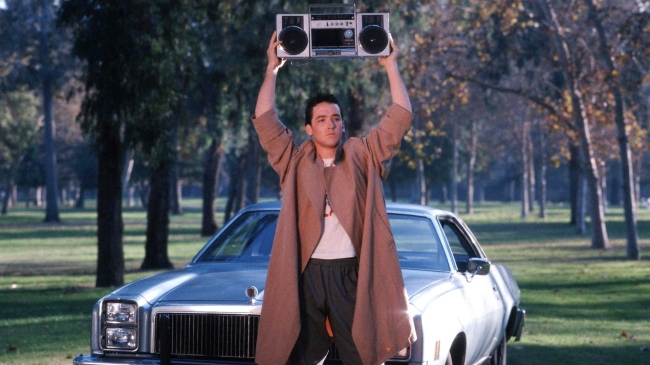
Say Anything (1989) Cameron Crowe **** – source: Netflix
In Brief: John Cusack plays the loveliest young man in the world and everything turns out okay.
In Briefer: See ‘In Brief.’
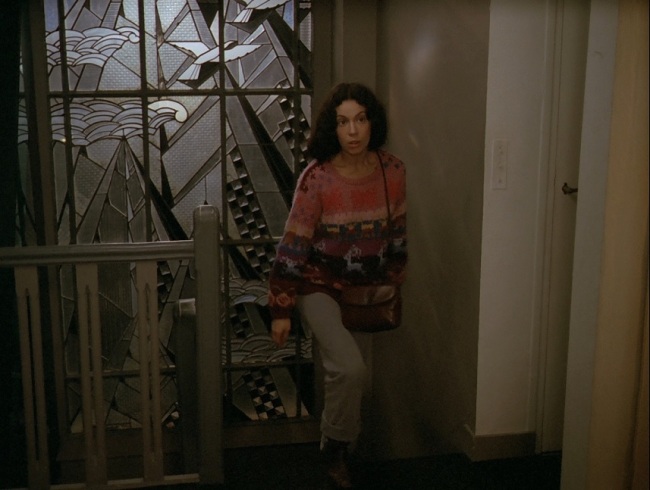
A Good Marriage (1982) Eric Rohmer **** – source: Arrow UK DVD
In Brief: The ‘romantic comedy’ as imagined by Rohmer.
Not going to write much on this one because, to my shame, I started to fall asleep during it. No, it’s not because I find Rohmer’s films trying or boring, quite the opposite really. We’ll have no ‘paint drying’ jibes (although most of the people who bring that one out have either never seen Night Moves or any Rohmer films). Really I was just very, very tired. Which isn’t a great idea when watching a very talky, subtitled film. Even when the film hilariously, though with no lack of sensitivity, observes a typically assured Rohmer-ian protagonist as she decides she is going to get married. Who is she going to marry? That will come later, what’s important is that she has determined quite sensibly that this is the wisest course of action for right now. Luckily, I’d seen it before so my unplanned slumber wasn’t too disruptive. If you know Rohmer, then you’ll know this is a treat. If you’re unfamiliar with his work, this is a perfect place to start. It’s just like a typical ‘romantic comedy’ except Rohmer removes all the narrative conveniences that allow the genre to offer happy conclusions. It also boasts an awesome old-school synth theme, which might not typically be what people look for in the work of Nouvelle Vague auteurs.

